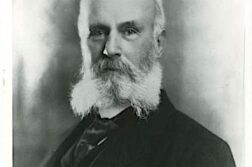The following article first appeared in The Boston Phoenix, August 22–28, 2003 issue.
AMERICANS LOVE happy endings. Yet in the world of great American literature, there are so very few. That’s so not only in the novels—Moby-Dick, The Scarlet Letter, The Portrait of a Lady, An American Tragedy, The Great Gatsby, The Sun Also Rises—but also in the lives of American authors themselves, who have often been beset by personal and economic failure, melancholia, alcoholism, money problems, suicide, and general misery. Maybe that is why the recent publication of Twenty Days with Julian and Little Bunny by Papa (New York Review of Books Classics, 2003) by Hawthorne—perhaps America’s greatest, and most depressive, genius—has generated such enormous critical praise and popular enthusiasm.
Introduced by novelist Paul Auster, this 72-page “lost” memoir, which was essentially an unnoticed sketch in Hawthorne’s 800-page American Notebooks, delightfully chronicles the 46-year-old author’s twenty days caring for his five-year-old son Julian at home in Lenox, Massachusetts, from July 28 to August 16, 1851, while his wife was visiting her family near Boston. Nothing much happens here: they get up and wash, they pick currants, Julian gets stung by a wasp, they keep a sweet if demanding pet rabbit named Bunny, Julian wets the bed, and Papa has trouble curling the boy’s hair in the morning. But specialists and general readers alike are entranced by Hawthorne’s loving tone and tender attentiveness to detail. It is warm, silly, lighthearted, and charming—everything Hawthorne is decidedly not in his novels.
But lurking within this family romance of nature walks and berry picking is a darker story—possible material for another version of The Scarlet Letter—that critics seem to want to avoid: the complex, sexually fraught relationship that summer between Hawthorne and Herman Melville. The 31-year-old author of the soon-to-be-published Moby-Dick (it would be released, and critically dismissed, in November of that year) visited Hawthorne and Julian several times over the course of their summer idyll. But as felicitous as Melville’s cameo appearances were in Hawthorne’s retelling, they were in reality complicated by the younger writer’s idealization of the distinguished author fifteen years his senior. What is only hinted at in Hawthorne’s memoir—which, after all, was intended to be read principally by his wife—becomes more clear in correspondence. We have only Melville’s letters to Hawthorne (the older man’s responses were destroyed or did not survive), but what letters they are!






